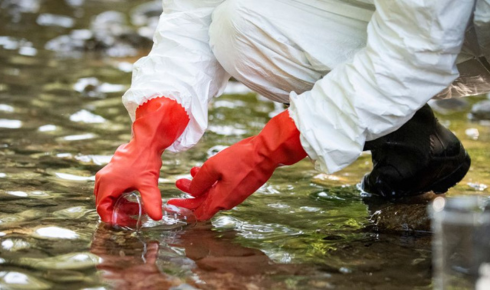We often take it for granted. That steady stream from your kitchen faucet—clear, cool, seemingly harmless. But here’s the thing: not all water that looks clean is clean. And for millions around the world, that invisible line between hydration and harm is thinner than we’d like to admit.
Let’s talk about the elephant in the glass—contaminated water. The kind you can’t always see or smell. The kind that slowly chips away at health, infrastructure, and peace of mind without dramatic signs. It’s easy to overlook until the damage begins to surface.
A Glass Half Full… of What, Exactly?
You know the drill. You fill a glass, you sip. You cook with it. You shower in it. You wash your baby’s bottles with it. But behind all those daily routines might lurk pollutants that have nothing to do with murky rivers or oil spills. We’re talking tap water—municipal, well, or anywhere in between—that contains unexpected, often undetectable intruders.
This isn’t meant to scare you. It’s meant to wake you up. Because water isn’t just water. It’s the carrier of life—or, sometimes, illness.
The Invisible Trouble-Makers: Not All Contaminants Are Created Equal
If your idea of dirty water stops at mud or visible slime, it’s time to zoom out. Most of the serious issues stem from things you can’t see. Things like bacteria, heavy metals, pesticides, or pharmaceutical residue that sneak their way in via pipelines, agricultural runoff, corroded infrastructure, or even nature itself.
Let’s break this down simply, starting with biological contaminants—these are living organisms, and yes, that sounds gross for a reason.
Bugs in the Water: The Microbial Threat
Biological contaminants include bacteria, viruses, and parasites that end up in your water supply due to human waste, animal runoff, or natural presence in soil. Think E. coli, Giardia, Cryptosporidium—names you’ve probably heard during boil water advisories. These microscopic threats can cause diarrhea, nausea, fever, and far more serious long-term illnesses when left unchecked.
You don’t need to live in a remote village or undeveloped country to be affected either. Plenty of first-world rural communities rely on wells or outdated water systems that lack adequate filtration or disinfection.
It’s like a bad roommate: you don’t know they’re there until they’ve wrecked your system.
Now Let’s Talk About the Non-Living Invaders
Unlike bacteria or viruses, chemical contaminants don’t reproduce or mutate, but they can do just as much—if not more—harm over time. They come from industrial waste, pesticides, road runoff, old plumbing, and even the very systems designed to treat your water.
Ever heard of lead pipes? Arsenic in groundwater? Fluoride debates? How about nitrates from fertilizer seeping into your well?
These substances can linger in your body, potentially leading to developmental delays in children, reproductive issues, liver damage, neurological disorders, and increased cancer risk. Not because you drank a gallon in one go, but because you absorbed a little—every single day—for years.
Now imagine cooking, bathing, and brushing your teeth in that.
When the Taste Is Fine, But the Water Isn’t
One of the biggest myths people believe is, “If it tastes okay, it must be safe.” Unfortunately, many of the most harmful contaminants are tasteless, odorless, and invisible. Some won’t trigger any red flags until symptoms show up weeks or even years later.
And it’s not just about drinking. Shower steam can release volatile organic compounds. Kids absorb more per body weight while bathing. And coffee brewed with tainted water? Still tainted.
This is why routine water testing isn’t a “paranoid” move—it’s common sense.
The Role of Infrastructure (Or Lack Thereof)
Municipal systems do their best, but let’s be honest—many were built decades ago and patched instead of replaced. Budget cuts, aging pipes, and increasing demand mean it’s not always possible to guarantee perfect filtration 100% of the time. Then throw in natural disasters, chemical spills, or human error—and you’ve got a real mess on your hands.
If you rely on a private well, you’re not exempt. In fact, you’re fully responsible for your own water quality. And while that gives you freedom, it also means the onus is on you to stay vigilant.
So… What Can You Actually Do?
The goal isn’t to panic—it’s to act smarter. And the good news is, there are a bunch of tools at your disposal:
- Test your water. This is step one. Know what’s in it. You can use DIY kits or contact a local lab.
- Install the right filtration. Don’t just slap on a Brita and call it a day. Match your filter to your issue. For heavy metals, a reverse osmosis unit might be ideal. For bacteria, UV systems or chlorination might work best. For general safety, whole-house filters can be a game changer.
- Maintain regularly. Filters wear out. Systems need inspection. Wells should be tested yearly. Think of it like your health—proactive beats reactive.
- Stay informed. Subscribe to alerts in your area. Join local water boards or simply keep up with neighborhood Facebook groups. The faster you hear about an issue, the faster you can respond.
Prevention Over Panic: A Mindset Shift
At the end of the day, it’s not about fearing your water. It’s about respecting it. Clean water is the foundation of everything—health, cooking, hygiene, comfort. And that’s why ignoring water quality issues is like ignoring warning lights on your car dashboard. You can, but eventually it’ll cost you.
Awareness doesn’t have to come with anxiety. It can come with empowerment.
Final Thoughts: Clarity Is Peace of Mind
You brush your teeth with it. You give it to your pets. You pour it into pasta, mix it with smoothies, and fill the ice cube trays without thinking twice. Water is the most constant companion in your household. And yet, it’s often the most misunderstood.
Contaminated water doesn’t always announce itself with fanfare. Sometimes, it tiptoes in quietly. But that doesn’t mean you have to let it stay.

